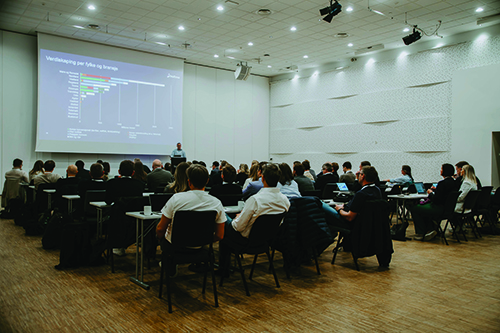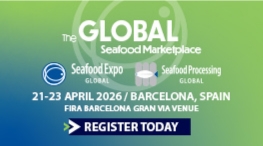Cod Cluster annual conference, 3-4 June 2025, Gardermoen
This article was featured in Eurofish Magazine 4 2025.
The annual conference of the Cod Cluster, a Norwegian gathering of all those involved in the country’s whitefish industry, discussed various issues that retard the sector’s efforts to fully realise its potential.
Cod Cluster, a Norwegian whitefish cluster, gathered its members on 3-4 June at Gardermoen (Oslo) for its annual two-day -conference. The -cluster works to improve conditions for Norwegian companies involved in fishing, processing, and selling codfish, both wild-caught and farmed. A recurring word in the programme was ILAG which means together in Norwegian. Because without working together, there will be less growth, development, profitability, and settlement along the Norwegian coast. Norway is a major seafood nation, and there is cross-party political agreement that settlement and business activity is very important along the entire coast—which is among the world’s longest.
The cluster represents five key areas along the value chain
The conference started by providing a status update on the five areas the cluster works within: processing, live storage, cod farming, by-products, and market. The cluster’s goals include increasing activity in the industry, enhancing the profitability of the fishing sector, and creating more settlement along the coast. Although the cluster has been working on most of these issues for ten years already, there is still a long way to go before the fish is fully utilised and the desired profitability has been achieved. The research presented in this session of the event unfortunately showed that the cluster is, to an extent, heading in the wrong direction. The question that then lingered in the air was whether this was a development that could be reversed?
What about cooperation between the fleet, the fishing industry, and cod farming? It may seem that there are -conflicting interests between the different parts of the industry. A representative from each part of the industry was therefore challenged to say why the other two were important to them. A fisherman, a fish industry representative, and a cod farmer at least on the stage agreed that they both can and must work together. The industry needs year-round access to raw materials both to achieve profitability but also to be able to offer attractive jobs. Without a living community and an industry, the fisherman has no place to deliver their catch. And with ever-decreasing quotas on wild cod, farmed cod can help build jobs, communities, and markets for cod, both nationally and internationally.
Economically active coastal areas offer multiple benefits
The importance of a living coast was the next topic raised at the conference. This is critical both from a security policy -perspective but also from a value creation point of view. -Preparedness is becoming increasingly important in an -unstable world, and fishing and aquaculture will be important for self-sufficiency for Norway in a crisis. Furthermore, fishing and aquaculture together are Norway’s second-largest export industry, and the value creation that occurs as a result of activity and settlement along the coast is also economically very important for Norway.
Why is it so difficult to turn good reports and ambitions into actual action? We look at the political and regulatory brakes in the system—and what it takes to create real development. How can we get the fish to yield more, strengthen the industry, and ensure that the seafood sector contributes to jobs and value-creation along the coast? The Norwegian fishing industry is very strictly regulated through a multitude of laws and regulations. As mentioned above, there is cross-party political agreement to strengthen the seafood industry. However, it has proven difficult to achieve in practice. Over the last two to three decades, 20 or 30 public investigations have been made on how development can be accelerated. Almost all these investigations are now gathering dust in a drawer. Why is that? Implementation of the reports’ recommendations is prevented by precisely the same strict regulations—or rather the lack of political will to change the regulations. This was one of the conclusions that emerged during the session on how more value creation can be achieved. Participants also discussed whether EU membership was a solution. Today, almost 30,000 jobs within the EU are solely based on raw materials from the Norwegian seafood sector. Opinion polls show that support within Norway for EU membership has risen considerably over the last months but still lags the “no” side. After a lively if inconclusive debate the first day of the conference ended with a festive meal highlighted by farmed cod from Ode.
Seeking to achieve 100% yield from fish
On the second day of the conference, the focus was on market development, especially for farmed cod, which is helping to open many new niche markets for Norwegian whitefish. Furthermore, work is being done to achieve the goal of 100% utilisation of the fish. Norway still has a way to go before that goal is achieved. But with the continuous development of new technology and greater awareness at all levels that the whole fish can be used for human consumption, there is hope of reaching the goal quickly. After this introduction, participants split into two groups. The wild fish group addressed the topic, increased production of wild fish in Norway, both by looking at the history of cod fishing and the genesis of the current situation. This group also discussed fisheries crime and potential measures to combat it. The cod farmers group discussed issues around regulations and the use of vaccines. The group also held a workshop on further breeding work on farmed cod.
This meeting place for the industry will always be important. Here, issues can be discussed and possible solutions presented in the spirit of ILAG. The traditional whitefish industry is far from fully developed, and cod farming is still only in its infancy. All the stakeholders can learn from each other, and therefore it is so important that there is a forum where knowledge can be exchanged and concerns can be expressed. The Cod Cluster’s annual conference provides just such an opportunity, and all participants will be heartily welcome to next year’s event.
Maiken Johnsen, Cod Cluster,
maiken@codcluster.no









